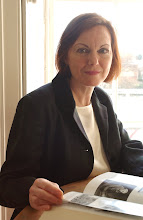
These are the Bloomsbury parishes from Stanford's parish boundary map, 1877. According to this information, there are twenty parishes wholly or partly within the Bloomsbury area. Of these, six are wholly within Bloomsbury.
They are Holy Cross, All Saints St Pancras, St George's Bloomsbury, St Peter (Regent Square), St George the Martyr (Queen Square), and St John Holborn (Red Lion Square).
Of the other fourteen, we are only interested in the streets which fall within our borders, ie. Tottenham Court Road (west), Euston Road (north), Gray's Inn Road (east) and New Oxford Street/High Holborn (south).
These parishes are: St Andrew (Wells Street), St John (Fitzroy Square), and St Mary - only Tottenham Court Road.
St James (Hampstead Road), Christ Church (Somers Town), and St Saviour - only Euston Road (New Road).
St Albans - only Gray's Inn Road.
St Andrews - only Gray's Inn Road and High Holborn.
All Saints (Islington) - only Gray's Inn Road and Euston Road (New Road).
St Pancras (pictured, c.1890) - only Euston Road and streets south of here.
St Jude (Gray's Inn Road) - only Gray's Inn Road and streets west of here.
St Giles in the Fields - only St Giles High Street, Broad Street, High Holborn and streets north of here.
St Bartholomew's, and Trinity (Gray's Inn Road) - only Gray's Inn Road and streets west of here.



